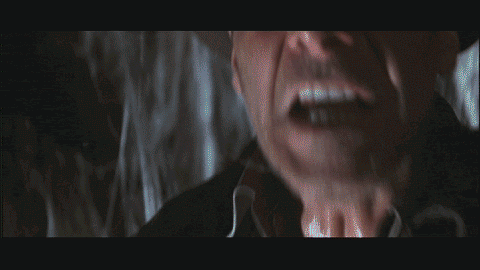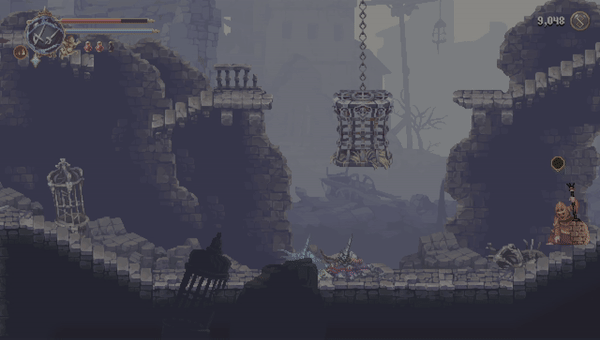Blasphemous 2 Review
“The penitent man will pass. The penitent man is humble before God. The penitent man…The penitent man is humble. Penitent man is humble…kneels before God. Kneel!”
If you ask me, Indy got off easy compared to The Penitent One. Two blades and a saw? That’s it? Granted, Indy did not have the benefit of a checkpoint but still.
In this sequel to 2019’s Blasphemous, the soulslike metroidvania from developer The Game Kitchen, one thousand years have passed since the events of the Wounds of Eventide, Blasphemous’ final DLC. The Miracle is back and The Penitent One has been awoken to stop it. Note: Completion or even playing the first game is not a requirement outside of the need to be more familiar with the lore of the land Cvstodia and The Penitent One.
Similar to its predecessor, Blasphemous 2 is a sidescrolling, hack-and-slash affair. This time though, The Penitent One has a few new tricks under his capirote. For those returning players, gone is the Mea Culpa. Fear not, there are three new weapons for you to wield. First, you have the ol’ ball and chain (no one’s spouse was harmed in the making although I sense mine is giving me a side eye). It is actually called a flail but in-game, it is Veredicto. Second, you have the curved sword, Ruego Al Alba, and third, the daggers, Sarmiento & Centella. You have a chance to try each out on a practice dummy of sorts but once you have made your choice, the other two options need to be found somewhere in Cvstodia. Each weapon has its own combat style: Veredicto is slow but powerful, Sarmiento & Centella do less damage but strike significantly faster, and Ruego Al Alba is a middle ground between the others. Your choice also determines the starting point on this pilgrimage as each weapon also provides a form of world traversal. For example, Sarmiento & Centella allows you to interact with these reflective mirrors that briefly teleport you if you quickly chain your strikes. As you explore, you will notice the traversal mechanics the other weapons provide in the world. This also means that the beginning of the game will be one of three possible paths but, being a Metroidvania, you will see all three soon enough.
Each weapon also has a progression tree to level up and unlock the full potential of the weapon. I started out with Sarmiento & Centella and really did not want to swap but found that each weapon does excel over the others in certain situations. The daggers are capable of lightning damage (Centella is Spanish for spark) and the way it works, you build up a meter with consecutive hits without being hit. This worked great on bosses as the lightning attacks remain until you get hit. In a fight that I knew I probably might take a hit or two, I used a different weapon that did not rely on perfect timing.
Rounding out your arsenal are Rosary Beads, Prayers, and Favours. Returning from the first game, Rosary Beads provide The Penitent One with minor passive buffs such as resistance to certain attacks or an increase in the drop rate of Tears of Atonement. The Rosary can be upgraded to hold more beads. Another returning feature are the Prayers but with a major upgrade. Prayers are now split into Quick Verses and Chants. Quick Verses are just that, quick to use, and they inflict some minor damage at a low Fervor cost. Chants, on the other hand, cost about double the amount but can do some major damage. Both Rosary Beads and Prayers can be changed on the fly. Last but not least are Favours. With the aid of the Sculptor, The Penitent One can equip figurines that provide significant buffs such as an increase in damage or increased critical chance with certain abilities. Favours can even be organized into presets which work like loadouts in Call of Duty. The key to improving each of these areas is exploring as that is where new Rosary Beads, Prayers, and Favours will be found. Well, that or the vendor that sells an item or two.
As this is a Soulslike Metroidvania, does it live up to those names? Most definitely and then some. If you played the first game, you cannot deny the Souls aspects that are ever-present. For starters, you have both bonfires (Prie-Dieu) and Estus flasks (Bile flasks). Rest at the Prie-Dieu and sure enough, enemies respawn. Like Souls, fights are all about patterns and once you learn them, you can get past them. That said, Blasphemous 2 is much more forgivable than any Souls games I have ever played (there is a joke here about the church and blah blah blah). Unlike Blasphemous 1, traps do not immediately kill you. If you have the health, you just start back on the nearest ledge to where you succumbed to your “death.” Many boss fights take place right near a Prie-Dieu so it will only be a short run back to try again.
Regarding the Metroidvania portion of our evening, EVERYTHING fits that bill here. There are practically no straight paths to be found. The in-game map with the ability to mark locations is perfect for anyone who likes to take notes when playing these types of games. The sequel did add an ability to teleport right back to the starting zone from anywhere. There are puzzles, false walls, and levers connected to other levers, not to mention that the three weapons themselves play a huge part in the Metroidvania aspect. It is such a great feeling when games have those “Yes!” or “Finally!” or “Oh!” moments. Blasphemous has it both when you can take down a boss after countless tries and thoughts of smashing the controller and when you unlock a new traversal method and remember a location that you wanted to explore.
There is no sophomore slump here. Blasphemous 2 is a worthwhile sequel and improves upon the first game in every imaginable way. For fans of the first, you are in for a special treat. For those new to the series, do not miss out this time around. 2023 already has been a stacked year with massive releases and Blasphemous 2 belongs in every single conversation.

























